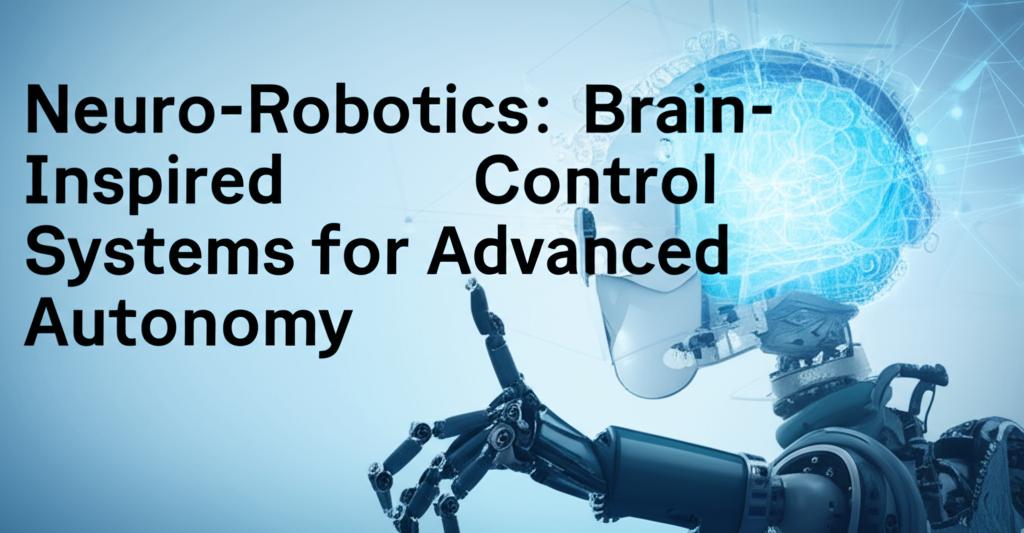The quest for advanced autonomy in robotic systems is increasingly drawing inspiration from the intricate workings of the biological brain. Neuro-robotics, a field that merges neuroscience, artificial intelligence (AI), and robotics, is at forefront of this endeavor. By mimicking the brain's structure, learning mechanisms, and control principles, researchers are developing sophisticated control systems that enable robots to operate with greater intelligence, adaptability, and efficiency in complex and dynamic environments.
Recent advancements highlight a significant trend towards neuromorphic engineering – designing circuits and systems that replicate the brain's neural networks. This approach aims to create robots capable of learning, self-organizing, and making real-time decisions. A key focus is on developing neuromorphic control systems based on brain-inspired algorithms like spiking neural networks (SNNs) and reinforcement learning. SNNs, in particular, process information using discrete "spikes," similar to biological neurons, offering the potential for highly energy-efficient computation, crucial for autonomous robots with limited power resources.
Researchers are actively exploring how these neuromorphic control systems can be integrated with robotic hardware for real-time decision-making and adaptive behavior. The goal is to empower robots to autonomously adjust to environmental changes, learn new tasks, and interact intelligently with humans and other agents, much like living organisms. This includes investigating algorithms that mimic biological learning and cognition, such as Hebbian learning, synaptic plasticity, and various neural network training mechanisms. Unsupervised, self-supervised, and reinforcement learning paradigms, inspired by the brain's ability to learn and adapt, are central to achieving autonomous learning in robots.
The application of these principles is evident in diverse areas. In autonomous driving, brain-inspired computational systems using SNNs and event-driven processing are enhancing real-time perception, decision-making, and adaptive learning capabilities. Neuromorphic implementations of established controllers are showing promising results, converging to optimal performance with a remarkably small number of neurons in simulations. Beyond wheeled robots, the principles of neuro-robotics are also being applied to the development of humanoid robots, aiming to replicate human-like perception, decision-making, and motor control. This includes research into brain-inspired visual cognition, decision-making processes that may incorporate artificial emotion, and musculoskeletal systems with high flexibility.
One of the significant advantages of brain-inspired systems is their potential for energy efficiency. Neuromorphic chips are being designed to process data more efficiently than conventional computing hardware while consuming significantly less power. This is particularly critical for mobile robots and drones that operate on battery power. For instance, research into neuromorphic control systems for drones demonstrates the possibility of mapping raw sensory input directly to motor commands using SNNs, enabling end-to-end autonomy on a single neuromorphic chip.
Looking ahead, the integration of AI, particularly advancements in machine learning and deep learning, continues to fuel progress in neuro-robotics. There is a growing focus on developing intelligent robots to assist people with physical disabilities, where brain-inspired algorithms and brain-machine interfaces play a crucial role. Furthermore, the field is exploring how robots can learn complex tasks through imitation learning, for example, by observing surgical procedures, which could accelerate training and lead to more adaptable robotic systems.
Despite the significant strides, challenges remain. Scaling up these brain-inspired systems and ensuring their robust functionality in unpredictable real-world scenarios are ongoing areas of research. The development of a unified theoretical framework that effectively integrates insights from neuroscience with robotic engineering is crucial. Moreover, as robots become more autonomous and capable of complex decision-making, ethical considerations and the development of safe and reliable human-robot interaction protocols become increasingly important.
In conclusion, neuro-robotics is a rapidly evolving field that holds immense promise for creating truly autonomous systems. By continuing to unravel the complexities of the brain and translating that understanding into novel control architectures and learning algorithms, researchers are paving the way for a future where robots can operate with unprecedented levels of intelligence, adaptability, and efficiency across a wide range of applications.

